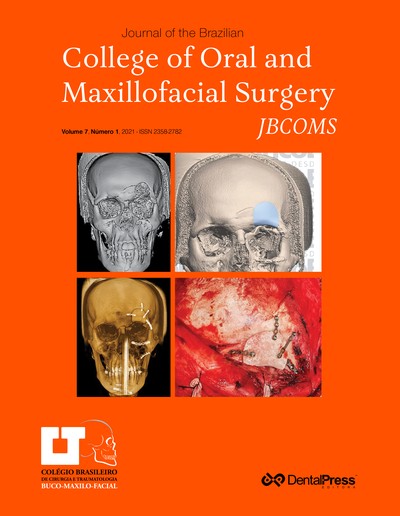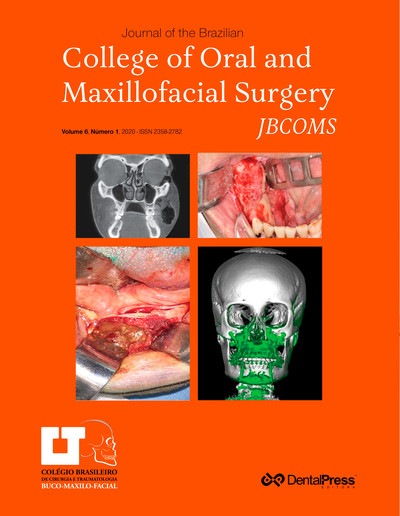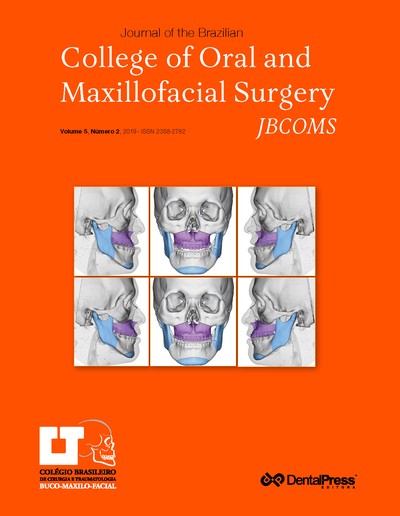
Anatomical and clinical implications of third molars displacement into deep fascial spaces: two cases report
RAFAEL CORREIA, ISABELA P. BERGAMASCHI, MARINA FANDERUFF, NELSON LUIS B. REBELLATO, DELSON J. COSTA, LEANDRO E. KLUPPEL, RAFAELA SCARIOT
Introduction: Accidental cases of third molars displacement into deep fascial spaces may occur due to different etiologies, from anatomical limitations to iatrogenic situations. Adjacent anatomical spaces such as lateral pharyngeal space, infratemporal fossa, pterygomandibular and buccal space have been reported in literature. Objective: The main purpose of this report is to describe two cases of third molars displacement and highlight the anatomical implications of it. Cases report: The first case reports a displacement of the right maxillary third molar into the buccal space. Tooth was assessed intraorally through a submucosal incision under the parotid papilla, and removed using a periosteal elevator, due to the fact that the crown of the tooth was in the line of the incision. In the second case, the right mandibular third molar was displaced into the submandibular space. It was assessed through an extraoral approach due to its proximity to the mandibular base. Discussion and Considerations: Knowing the anatomical features of the maxillofacial region is important to the oral surgeon for a correct diagnosis and treatment of third molars displacement. When the tooth movement in an unfavorable direction, it is suggested that open surgical procedures should be conducted instead of using elevators or excessive force. Keywords: Oral surgical procedures. Molar, third. Fascia.
Keywords: Oral surgical procedures. Molar, third. Fascia.
How to cite: Correia R, Bergamaschi IP, Fanderuff M, Rebellato NLB, Costa DJ, Kluppel LE, Scariot R. Anatomical and clinical implications of third molars displacement into deep fascial spaces: two cases report. J Braz Coll Oral Maxillofac Surg. 2020 May-Aug;6(2):17-26.
Friday, September 27, 2024 02:15










